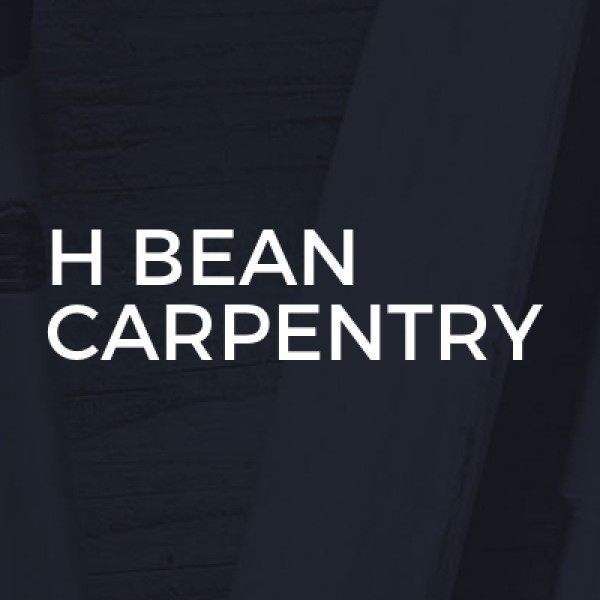Loft Boarding in Leyton
Welcome to Crown Roofing And Building, your trusted partner for all your building and renovation needs in New Barnet and across Barnet, L... read more »
Welcome to SAF Construction Consultant, your premier choice for construction services in South Tottenham and the wider Haringey, London a... read more »
Welcome to H Bean Carpentry, your go-to experts for all things carpentry and plastering in the heart of Blackfen. Proudly serving the Bex... read more »
Welcome to Rems Building Services Ltd, your trusted p... read more »
Welcome to O'Donovan Construction Management Ltd, you... read more »
Welcome t... read more »
Welcome to Animus Construction, your trusted partner... read more »
Welcome to Madeira Construction Ltd, your trusted bui... read more »
Welcome to Brooklyn Block Paving, your trusted trades... read more »
A.N Build Ltd is a reputable constru... read more »
Welcome to Addspace Building Ltd, your trusted builde... read more »
Ving Building Solutions Limited is y... read more »
Kaz Star Builders Ltd: Premier Builders in Ea... read more »
Welcome to Upmost Lofts, your premier choice for top-... read more »
Welcome to A To Z Builders, your go-to experts for al... read more »
Welcome to Hall and Sons Ltd, your premier choice for... read more »
Welcome to G&J Builders, your trusted partner for lof... read more »
Hoxha Construction UK Ltd, a reputab... read more »
Search Loft Boarding in places nearby
Understanding Loft Boarding in Leyton
Loft boarding in Leyton is an increasingly popular home improvement choice for many residents. With the rising need for additional storage space and the desire to maximise living areas, loft boarding offers a practical solution. This article delves into the various aspects of loft boarding, providing a comprehensive guide for homeowners considering this upgrade.
The Benefits of Loft Boarding
Loft boarding provides numerous advantages, making it an attractive option for homeowners. Firstly, it significantly increases storage space, allowing you to declutter your home without sacrificing valuable living areas. Additionally, it can enhance the energy efficiency of your home by improving insulation, which can lead to reduced heating bills. Moreover, a well-boarded loft can add value to your property, making it a wise investment for the future.
Maximising Storage Space
One of the primary reasons homeowners opt for loft boarding is to maximise storage space. By creating a stable and accessible area, you can store items that are not frequently used, such as seasonal decorations, old furniture, or family heirlooms. This frees up space in other parts of your home, allowing for a more organised and tidy living environment.
Improving Home Insulation
Loft boarding can also improve the insulation of your home. By adding a layer of boards over the existing insulation, you can prevent heat from escaping through the roof. This not only keeps your home warmer during the winter months but also reduces your energy consumption, leading to lower utility bills.
Increasing Property Value
Investing in loft boarding can increase the value of your property. Potential buyers often view additional storage space as a significant advantage, making your home more appealing on the market. Furthermore, the improved energy efficiency can be an attractive selling point, as it indicates lower running costs.
Choosing the Right Loft Boarding Solution
When considering loft boarding in Leyton, it's essential to choose the right solution for your needs. Several factors should be taken into account, including the type of boarding, the installation process, and any additional features you may require.
Types of Loft Boarding
There are various types of loft boarding available, each with its own set of benefits. Standard chipboard is a popular choice due to its affordability and durability. However, for those seeking a more robust solution, plywood or tongue-and-groove boards may be more suitable. These options offer increased strength and stability, making them ideal for heavier loads.
Installation Process
The installation process for loft boarding can vary depending on the type of boards chosen and the existing structure of your loft. It's crucial to ensure that the joists are strong enough to support the additional weight. In some cases, reinforcing the joists may be necessary. Hiring a professional installer can ensure that the job is done safely and efficiently.
Additional Features
When boarding your loft, you may also want to consider additional features such as loft ladders, lighting, and insulation upgrades. These can enhance the functionality and accessibility of your loft space, making it even more useful and convenient.
Legal and Safety Considerations
Before embarking on a loft boarding project, it's important to be aware of any legal and safety considerations. Ensuring compliance with building regulations and maintaining safety standards is crucial to avoid potential issues.
Building Regulations
In the UK, certain building regulations must be adhered to when boarding a loft. These regulations are in place to ensure the safety and structural integrity of the property. It's essential to check with your local council or a professional installer to ensure compliance with these regulations.
Safety Standards
Safety should always be a top priority when boarding a loft. This includes ensuring that the boards are securely fixed and that the loft is accessible via a safe and sturdy ladder. Additionally, proper ventilation should be maintained to prevent issues such as dampness or mould.
Finding a Professional Loft Boarding Service in Leyton
For those who prefer to leave the task to the experts, finding a professional loft boarding service in Leyton is a wise choice. Professional installers have the experience and expertise to ensure a high-quality finish that meets all necessary standards.
Researching Local Installers
Start by researching local installers in Leyton. Look for companies with positive reviews and a strong reputation for quality work. It's also beneficial to ask for recommendations from friends or family who have had similar work done.
Requesting Quotes and Comparing Prices
Once you've identified potential installers, request quotes to compare prices. Be sure to ask for a detailed breakdown of costs, including materials and labour. This will help you make an informed decision and ensure that you receive value for money.
Checking Credentials and Experience
Before hiring an installer, check their credentials and experience. Ensure they are fully insured and have the necessary qualifications to carry out the work. Experience is also important, as it indicates a track record of successful installations.
DIY Loft Boarding: Is It a Viable Option?
For the more adventurous homeowner, DIY loft boarding can be a viable option. However, it's important to weigh the pros and cons before deciding to tackle the project yourself.
Pros of DIY Loft Boarding
One of the main advantages of DIY loft boarding is cost savings. By doing the work yourself, you can save on labour costs. Additionally, it allows you to work at your own pace and make adjustments as needed.
Cons of DIY Loft Boarding
On the flip side, DIY loft boarding can be challenging, especially for those with limited experience. It requires a good understanding of structural integrity and safety standards. Mistakes can be costly and may compromise the safety of your home.
Essential Tools and Materials
If you decide to go the DIY route, ensure you have the essential tools and materials. This includes a saw, drill, screws, and the chosen type of boarding. Safety equipment such as gloves and goggles is also important to protect yourself during the installation process.
Maintaining Your Boarded Loft
Once your loft is boarded, regular maintenance is key to ensuring its longevity and functionality. Proper care can prevent issues and keep your loft in top condition.
Regular Inspections
Conduct regular inspections to check for any signs of wear or damage. Look for loose boards, signs of dampness, or any structural issues. Addressing these problems early can prevent more significant issues down the line.
Cleaning and Organisation
Keep your boarded loft clean and organised. Regularly dust and vacuum the area to prevent the build-up of dirt and debris. Organise your stored items to make the most of the available space and ensure easy access.
Addressing Repairs Promptly
If you notice any damage or issues during inspections, address repairs promptly. This may involve replacing damaged boards or reinforcing weak areas. Timely repairs can prevent further damage and maintain the safety of your loft space.
Frequently Asked Questions
- Is loft boarding suitable for all types of homes? Loft boarding can be suitable for most homes, but it's important to assess the structural integrity of your loft before proceeding.
- How long does the installation process take? The installation process can vary depending on the size of the loft and the complexity of the project. On average, it can take a few days to complete.
- Can I still use my loft for storage if it's not boarded? While you can use an unboarded loft for storage, it may not be as safe or efficient as a boarded loft.
- Do I need planning permission for loft boarding? In most cases, planning permission is not required for loft boarding. However, it's always best to check with your local council.
- What is the cost of loft boarding? The cost of loft boarding can vary depending on the size of the loft and the materials used. It's advisable to obtain quotes from several installers to get an accurate estimate.
- Can loft boarding improve my home's energy efficiency? Yes, loft boarding can improve energy efficiency by enhancing insulation and reducing heat loss.
Send a message







